Pelicans and palm trees
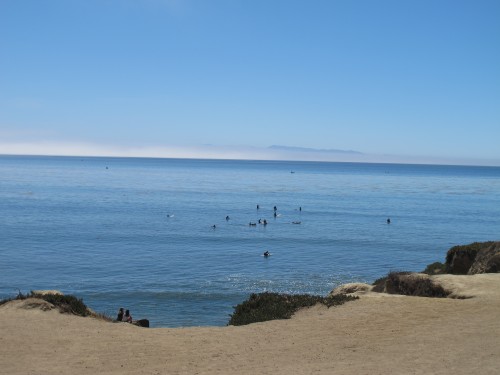
I decided to start my summer break right away. Three days after moving back to Bellingham from the North Cascades Environmental Learning Center, I was on an airplane headed to California. My adventure landed me in Santa Cruz at the home of some good friends. While they were “being adults” and working all day, I was free to explore.
My first evening there, the three of us walked the two blocks from their house to the beach. Win! Monteray Bay stretched out to the horizon, the water a slightly darker shade of blue than the sky. Fog was starting to come in from across the water. The air was warm but breezy enough to keep it from being too hot.
I remarked that whenever I’m in California it surprises me to see palm trees everywhere. For the most part, the other plants look familiar to me—firs and pines, junipers, leafy shrubs, and an assortment of colorful flowers. But palm trees? They just look so strange.
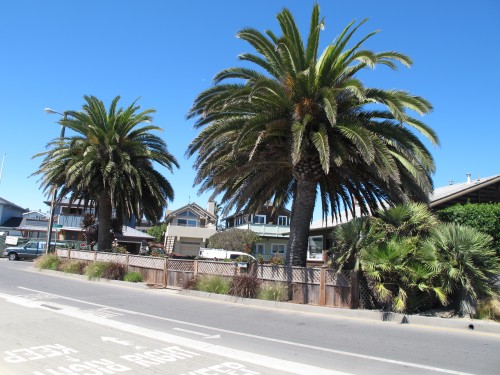 Palm trees line the streets and adorn peoples’ front yards. Photo by the author
Palm trees line the streets and adorn peoples’ front yards. Photo by the author
A flock of birds flew over the water in our direction. I assumed they were gulls but as they drew closer I realized that they were definitely something else. “Pelicans,” one of my friends commented. Of course! I thought. Their long bills gave it away, but I had never seen them outside of the few times I was in Florida as a kid so I hadn’t expected to see them here.
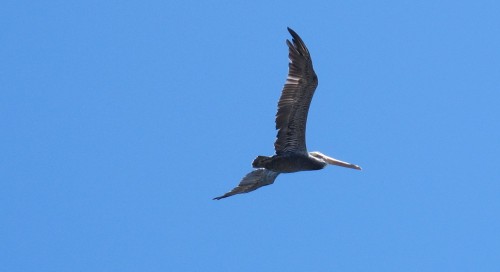 A lone pelican soaring over Monterey Bay. It was unusual for me to see one flying alone—mostly they were in flocks of at least eight birds. Photo by the author
A lone pelican soaring over Monterey Bay. It was unusual for me to see one flying alone—mostly they were in flocks of at least eight birds. Photo by the author
Palm trees are in the family Arecaceae. There are over 2,600 species of palms and they can be found in almost every type of habitat within their tropical, subtropical and warm temperate climates, thriving in rainforests as well as deserts. If we both closed our eyes right now and imagined a palm tree, we’d probably be thinking of pretty much exactly the same image, and although palms often have large, compound, evergreen leaves at the top of an unbranched stem, there are also many exceptions to this. These leaves are either palmately (‘fan-leaved’) or pinnately (‘feather-leaved’) compound and arranged in a spiral at the top of the stem.
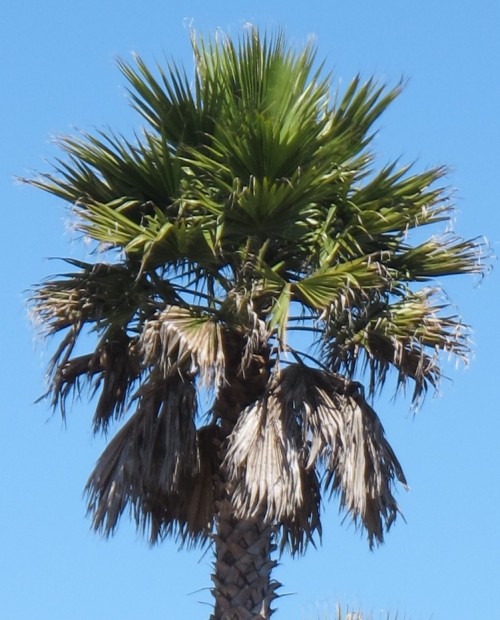 The tufted top of a palm. If they came in different colors they’d look a lot like the trufulla trees in The Lorax… Photo by the author
The tufted top of a palm. If they came in different colors they’d look a lot like the trufulla trees in The Lorax… Photo by the author
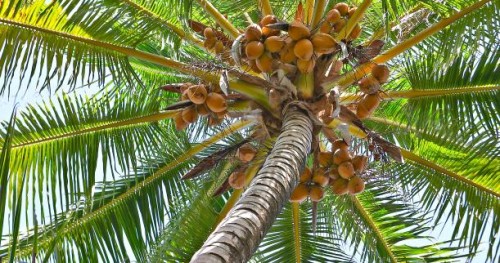 Looking up at those “large, compound, evergreen leaves” so characteristic of palm trees. Photo courtesy of Google images
Looking up at those “large, compound, evergreen leaves” so characteristic of palm trees. Photo courtesy of Google images
Did you know…? Palms first appeared in fossils 80 million years ago, toward the end of the Cretaceous period, and the biggest threat to palms is habitat loss caused by urbanization.
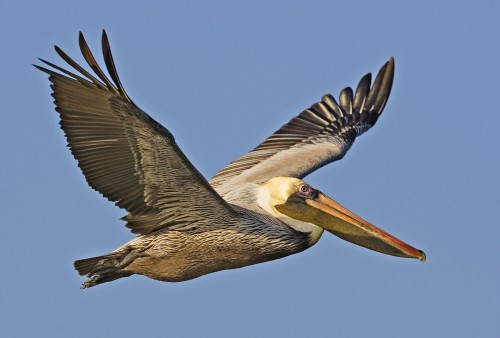 In North America we have Brown Pelicans (Pelecanus occidentalis). Photo courtesy of Google images
In North America we have Brown Pelicans (Pelecanus occidentalis). Photo courtesy of Google images
Now, pelicans are also kind of strange. They have been around for more than 30 million years and live in both tropic and temperate climates around the world. However, you won’t find any of the eight known species in polar regions, the interior of South America, or in the open ocean. Pelicans are in the Pelevanidae family, part of a genus of large water birds, and are distantly related to ibises, spoonbills, and herons.
I’m always interested in animal adaptations, so I find it really interesting that pelicans, as well as some of those other large water birds, have a specialized beak to aid them in catching their prey. Pelicans have a long beak and throat pouch that allows them to scoop up fish and then drain the water out before they swallow.
Did you know…? The genus Pelicanus was first described by Linnaeus in 1758. The name comes from the Ancient Greek pelekan (πελεκάν), which comes from pelekys (πελεκυς) meaning “axe.” In Greece, during the 5th and 4th centuries BCE, this word was used for both pelicans and woodpeckers.
Having spent some time exploring an area somewhat similar but also very different from my home turf, I’m glad to be back in my own familiar ecosystem again. There are always opportunities for more adventures…
Leading photo: Surfers in Monterey Bay waiting for that perfect wave in Santa Cruz, California. Behind them, the water and sky seem to go on indefinitely. Photo by the author
Ryan Weisberg is a graduate student in North Cascades Institute and Western Washington University’s M.Ed. program. Ryan grew up here in Washington, exploring the natural areas around Bellingham and in the Cascades. Passionate about writing since childhood, Ryan served as Chattermarks editor during their year-long residency at the North Cascades Environmental Learning Center. Ryan continues to enjoy writing for the blog.

